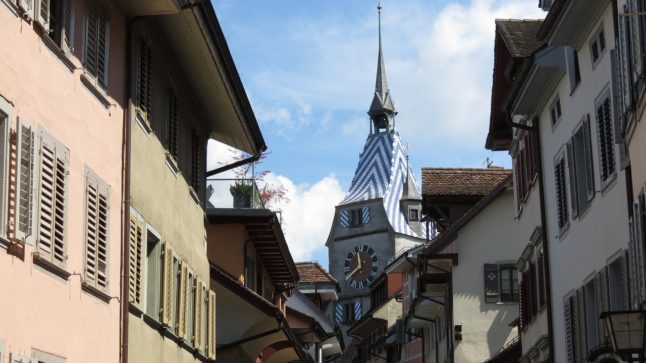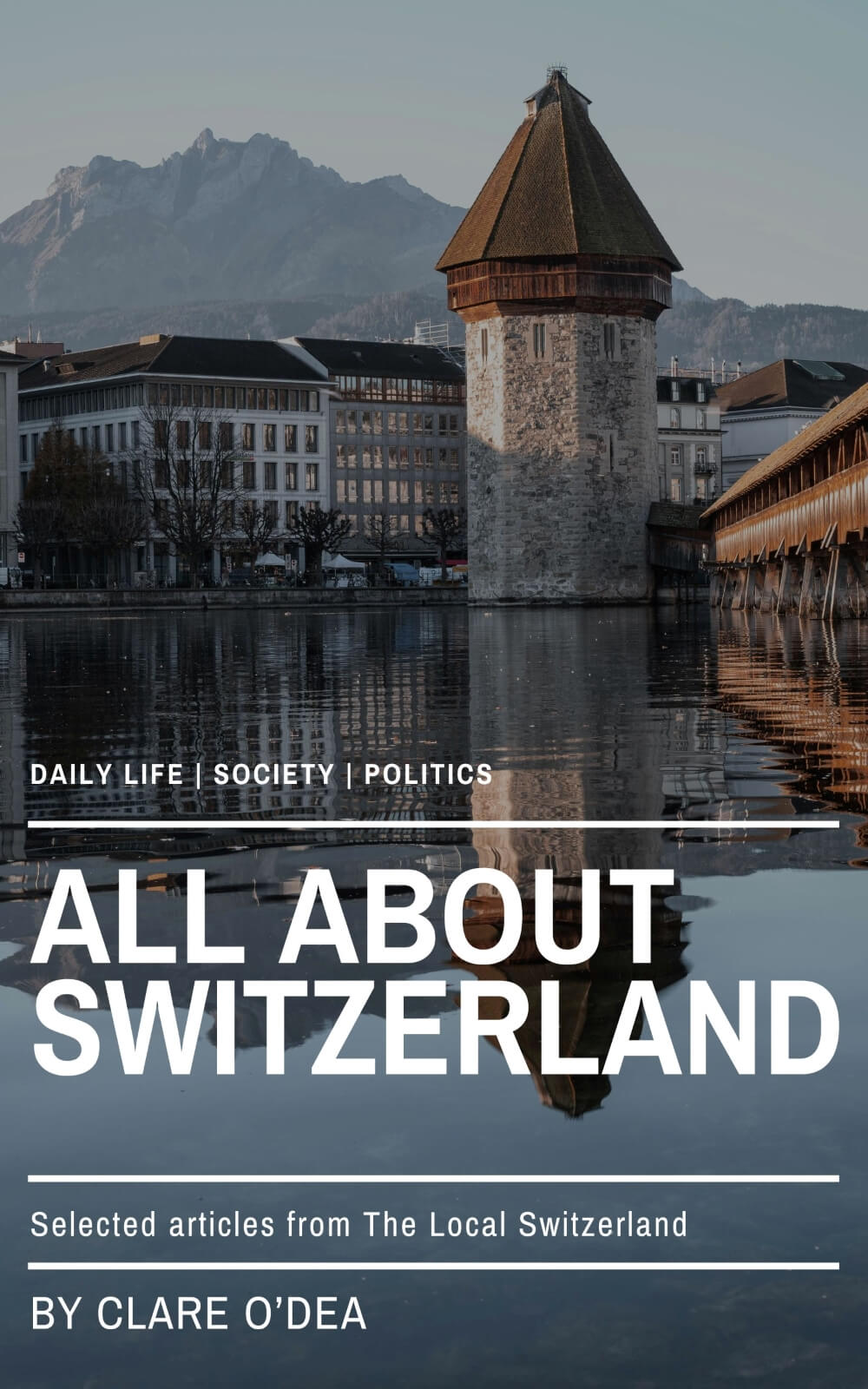Swiss business publication Handelszeitung rated scores of municipalities across the country to choose the best locations.
To do that, it based its research on data from the Federal Statistical Office as well as from real estate consultant IAZI.
Out of the total of 2,136 municipalities in Switzerland, 948 were surveyed. That’s because only towns with a population exceeding 2,000 residents were included.
The Handelszeitung has selected 50 municipalities based on criteria that includes quality of life, taxes, employment opportunities, housing, infrastructure, safety, schools, and leisure activities that are accessible residents.
All these criteria were taken into account when selecting the winner(s).
Wohnen Sie in einer der 50 Besten Gemeinden der Schweiz? https://t.co/qFU0Qii753
— Handelszeitung (@Handelszeitung) September 21, 2023
These municipalities are in the top eight:
Zug (canton Zug)
Not surprisingly, considering that this municipality boasts Switzerland’s lowest taxes, the Handelszeitung found that “more and more national and international companies are relocating there. Zug now has the most company settlements (per inhabitant) in all of Switzerland.
But besides “economic friendliness,” culture and sport are also important in this town of 28,000 people.
“Good economic conditions, short distances and, above all, good schools are our concept for success,” Zug mayor André Wicki pointed out. “Over the next few years, over 200 million will be invested in new school buildings and renovations.”
Everything is modern, the Handelszeitung said. The office buildings, the train station, even the medieval town hall, have been given a makeover.
And, of course, it helps when there is money in the city’s coffers; the municipal finances “are overflowing. Last year a surplus of 71 million francs was achieved, similar to previous years.”
How do public authorities spend this money?
On housing, for one. The city recently adopted an initiative that calls for 2,000 affordable apartments for Zug.
Yet, there will not be a frenzied construction activity that will clutter the town’s green and open spaces.
“Zug should not become another Monaco,” Wicki said.
READ ALSO: Why does the canton of Zug have Switzerland’s lowest taxes?
Rüschlikon (canton Zurich)
The 6,300-inhabitant commune is attractively located directly on the left bank of Lake Zurich.
It has a municipal swimming pool that is free for residents, a nearby forest, and the Duttweiler Park at the top of the hill, all of which provide recreation opportunities for the locals.
But even though the community has been attracting newcomers, and its population has swelled, authorities want to keep its small-town character and way of life.
“Rüschlikon has a village-like structure that should be preserved,” said mayor Fabian Müller. “It should not become an anonymous community.”
Sustainability and ecology are very important as well: a seawater heat network was recently initiated and put out to tender. Instead of obtaining heat from gas and oil, electricity will be generated from Lake Zurich in the future.
Maienfeld (canton Graubünden)
No wonder this commune of about 2.500 people (and probably as many goats and cows) is on the Handelszeitung’s ‘best’ list.
After all, it provided inspiration to 19th-century author Johanna Spyri to make it the home of her heroine, the quintessential ‘Swiss’ girl, Heidi.
Every year, 70,000 to 80,000 tourists find their way to Heididorf, a hamlet 2.5 kilometers above Maienfeld that was fictional Heidi’s fictional home.
But even though this influx of tourists from all over the world can be upsetting for the locals — “Maienfeld should not become a Disneyland,” its mayor Heinz Dürler said — the community still has lots of non-fictional qualities.
For instance, “the landscape, the many vineyards, and green spaces contribute to the town’s charm, Handelszeitung reports.
And despite its fame (at least among Heidi aficionados), the real estate in the commune is still affordable, at least by Swiss standards.
Bottmingen (canton Basel-Country)
Bottmingen (population 6,000) has the advantage of being a small municipality, but offering its residents plenty of cultural, sports, and recreational opportunities.
Among them are indoor and outdoor swimming pool, numerous walking paths, a forest, and a moated, 13th century castle.
Wealthy taxpayers live at the foot of the Bruderholz, to which a small part of Bottmingen belongs. About 1.6 percent of residents have assets of over 6 million francs and they pay, collectively, 57 percent of property taxes, which means the community’s financial situation is enviable.
This wealth spills over to the rest of the population as well, with some of the funds being invested in the local school system, daycare centres, and playgroups.
Rapperswil-Jona (canton St. Gallen)
Wages in this town of 28,000 residents are higher than the canton’s average and there are plenty of jobs locally, so people don’t have to commute the 40 kilometres to Zurich to work.
Real estate prices are also significantly lower than in notoriously expensive neighouring cantons of Zurich and Schwyz.
According to mayor Martin Stöckling, a lot of money is invested in sports activities. “There is almost no sport that you cannot practice here.”
Investments are also made in the school system.
Frauenfeld (canton Thurgau)
“Frauenfeld impresses with good job opportunities,” according to Anders Stokholm, the mayor of this 24,000-resident community. “There are as many jobs here as there are residents.”
Housing in Frauenfeld is still affordable, and the town is actively reducing its ecological footprint.
It is investing 50 million francs in the construction of a district heating project, and a wood-fired power plant already produces electricity for 8,000 people.
“The city center has been revitalised with seating sculptures, group events, and a new city bus route,” the Handelzeitung said.
Bern (canton Bern)
The federal city’s many qualities speak for themselves.
“For example, the old town that has been listed as a UNESCO World Heritage Site. You can get anywhere quickly with public transport. There seems to be more of everything than you need, be it grocery stores, doctors, hospitals, schools, shopping centers or leisure facilities. You have the traffic under control and there are no major traffic collapses, especially in comparison to other major Swiss cities,” according to the Handelszeitung.
Mayor Alec von Graffenried agrees. “I sense that the people of Bern are very satisfied.The surveys also show that,” he said.
There are 192,000 jobs for 145,000 residents, which is a great ratio.
READ ALSO: Why is Bern the ‘capital’ of Switzerland?
Schaffhausen (canton Schaffhausen)
The population of Schaffhausen, presently at 15,000 people, has been growing in the past 10 years, because housing is still a(comparably) affordable.
“More and more people from the Zurich area are moving to Schaffhausen,” said Mayor Peter Neukomm. “Many people used to think that Schaffhausen was too far away. But we are slowly being noticed, because of the good transport connections and the high quality of life with which Schaffhausen has always been able to score points.”
Here you will find one of the largest and best-preserved medieval old towns. There is also a wide range of sports and cultural activities on offer as well, including a literature and a jazz festival, among other events.
“The low tax strategy for companies and the opportunity to recruit skilled workers from southern Germany are paying off,” says Peter Neukomm. “As a result, we benefit from high corporate tax income, which enables us to invest heavily.”
A total of more than 200 million francs will be invested over the next four years in new sports and school facilities, public transport and the upgrading of public spaces,” he said.
These eight communities are all in the Swiss German-part (as is the Hendelszeitung). Towns in the French part of Switzerland and Ticino are listed as well, but not among the top ones.





 Please whitelist us to continue reading.
Please whitelist us to continue reading.
Member comments